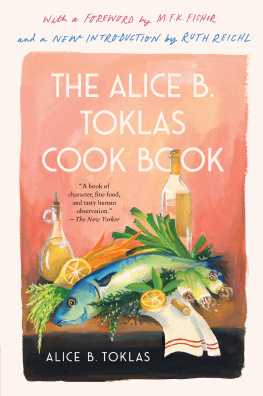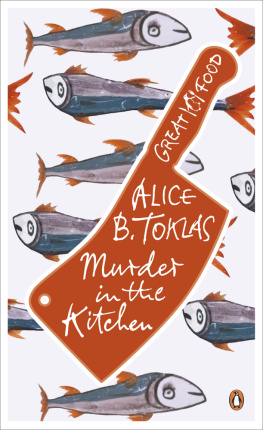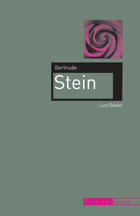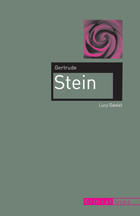A MARINER BOOK
HOUGHTON MIFFLIN COMPANY
Boston New York
A CCLAIM FOR M ONIQUE T RUONG AND The Book of Salt
"Evocative and complex ... Readers are in for much pleasure from this new novelist. The Book of Salt is a lovely book.
San Francisco Chronicle
"Perfectly rendered.O: The Oprah Magazine
"Fascinating ... The mood of Truong's Book of Salt is one of melancholy and loss, love and food, and Binh's delight in that other gift of the tongue, language.
New York Times Book Review
"More impressive and ambitious than most contemporary first works of fiction ... Displays its author's supple imagination on every page.Los Angeles Times
"Delicately wrought ... Truong writes in a seductively sensuous prose.Newsday
"This double impersonation, of the Vietnamese chef and the American expatriates, is a skillfully prepared dish, coddled by accomplished hands." Boston Globe
"Truong has a talent that inspires awe, as well as eager anticipation of what she may give us in the future.
San Jose Mercury News
"Adds a brilliant twist to the old tales of the Lost Generation in Paris ... A grand and magical narrative ... As a poignant story of survival, and as a fresh portrait of a famous time and place, The Book of Salt is a splendid triumph.Baltimore Sun
"A rich, poetic feast of a novel ... Rarely have the properties, the symbolism and the sensuousness of different foodstuffs been so articulately and emotively described."Guardian
"A sumptuous tale of cooking, language, cravings, and cruelty."
Village Voice
"A story of beguiling sensuality."Times
"Stunning ... So poetic is Truong's prose that at certain moments it resembles verse."Out.com
"[Truong] clearly is worthy of our ongoing attention ... Read and savor."Miami Herald
"Full of amusing details, wonderful oddities, and thoughtful observations."Black Book
"Dazzling ... A tour de force. Truong should take literate America by storm."Kirkus Reviews, starred review
"A delectable fictional memoir ... Truong provides a savory debut novel of unexpected depth and emotion."Booklist
"A mesmerizing narrative voice, an insider's view of a fabled literary household and the slow revelation of heartbreaking secrets contribute to the visceral impact of this first novel ... The narrative rings with emotional authenticity."
Publishers Weekly, starred review
First Mariner Books edition 2004
Copyright 2003 by Monique T. D. Truong
All rights reserved
For information about permission to reproduce selections from this book, write to Permissions, Houghton Mifflin Company, 215 Park Avenue South, New York, New York 10003.
Visit our Web site: www.houghtonmifflinbooks.com.
ISBN -13: 978-0-618-30400-4
ISBN -10: 0-618-30400-2
ISBN -13: 978-0-618-44688-9 (pbk.)
ISBN -10: 0-618-44688-5 (pbk.)
Library of Congress Cataloging-in-Publication Data
Truong, Monique T. D.
The book of salt / Monique Truong.
p. cm.
ISBN 0-618-30400-2
ISBN : 0-618-44688-5 (pbk.)
1. VietnameseFranceFiction. 2. Stein, Gertrude, 18741946Fiction. 3. Americans FranceFiction. 4. Toklas, Alice B.Fiction. 5. Paris (France)Fiction. 6. Women authorsFiction. 7. DomesticsFiction. 8. VietnamFiction. 9. Gay menFiction. 10. CookeryFiction. I. Title.
PS 3620. R 86 B 66 2003
813'.6 dc2i 2002192152
Book design by Melissa Lotfy
Typefaces: Garamond 3 and ExPonto
Printed in the United States of America
MP 10 9 8 7 6 5 4 3 2 1
For my father, a traveler who
has finally come home
THIS BOOK WAS WRITTEN ON TWO ISLANDS , in two countries, three states, and five cities. It has been a trying, scary, but above all an amazing journey. For making the amazing parts possible, thank you to the Edward and Sally Van Lier Fellowship, Fundacion Valparaiso, Corporation of Yaddo, Hedgebrook, Lannan Foundation, Asian American Writers' Workshop, Barbara Tran, Andrea Louie, Quang Bo, Hanya Yanagihara, David L. Eng, Isabelle Thuy Pelaud, Elaine Koster, Janet Silver, Lori Glazer, Carla Gray, Jayne Yaffe Kemp, and Deborah DeLosa.
I might never have had the courage to go in the first place, if long ago I had not met the following supportive souls: Grace Yun, Russell Leong, and Dora Wang.
But in the end the metaphor of a journey is empty, utterly meaningless, without someplace and someone to come back home to. Gratitude to Damijan Saccio, without whom I would not have either.
We had certainly luck in finding good cooks, though they had their weaknesses in other ways. Gertrude Stein liked to remind me that if they did not have such faults, they would not be working for us.
ALICE B. TOKLAS
1
OF THAT DAY I have two photographs and, of course, my memories.
We had arrived at the Gare du Nord with over three hours to spare. There were, after all, a tremendous number of traveling cases and trunks. It took us two taxi rides from the apartment to the train station before all the pieces could be accounted for. A small group of photographers, who had gathered for the occasion, volunteered to watch over the first load while we returned to the rue de Fleurus for more. My Mesdames accepted their offer without hesitation. They had an almost childlike trust in photographers. Photographers, my Mesdames believed, transformed an occasion into an event. Their presence signaled that importance and fame had arrived, holding each other's hands. Their flashing cameras, like the brilliant smiles of long-lost friends, had quickly warmed my Mesdames' collective heart. More like friends too new to trust, I had thought. I had been with my Mesdames for half a decade by then. The photographers had not been there from the very beginning. But once the preparation for the journey began, they swarmed to the entrance of 27 rue de Fleurus like honeybees. I could easily see why my Mesdames cultivated them. Every visit by a photographer would be inevitably followed by a letter enclosing a newspaper or magazine clipping with my Mesdames' names circled in a halo of red ink. The clippings, each carefully pressed with a heated iron, especially if a crease had thoughtlessly fallen on my Mesdames' faces, went immediately into an album with a green leather cover. "Green is the color of envy," my Mesdames told me. At this, knowing looks shot back and forth between them, conveying what can only be described as glee. My Mesdames communicated with each other in cryptic ways, but after all my years in their company I was privy to their keys. "Green" meant that they had waited desperately for this day, had tired of seeing it arriving on the doorsteps of friends and mere acquaintances; that the album had been there from the very beginning, impatient but biding its time; that they were now thrilled to fill it with family photographs of the most public kind. "Green" meant no longer their own but other people's envy.
I know that it may be difficult to believe, but it took the arrival of the photographers for me to understand that my Mesdames were not, well, really mine; that they belonged to a country larger than any that I had ever been to; that its people had a right to embrace and to reclaim them as one of their own. Of course, 27 rue de Fleurus had always been filled with visitors, but that was different. My Mesdames enjoyed receiving guests, but they also enjoyed seeing them go. Many had arrived hoping for a permanent place around my Mesdames' tea table, but I always knew that after the third pot they would have to leave. My Mesdames had to pay me to stay around. A delicious bit of irony, I had always thought. The photographers, though, marked the beginning of something new. This latest crop of admirers was extremely demanding and altogether inconsolable. They, I was stunned to see, were not satisfied with knocking at the door to 27 rue de Fleurus, politely seeking entrance to sip a cup of tea. No, the photographers wanted my Mesdames to go away with them, to leave the rue de Fleurus behind, to lock it up with a key. At the Gare du Nord that day, all I could think about were the flashes of the cameras, how they had never stopped frightening me. They were lights that feigned to illuminate but really intended to blind. Lightning before a driving storm, I had thought. But I suppose that was the sailor's apprehension in me talking. It had been eleven years since I had made a true ocean crossing. For my Mesdames, it had been over thirty. The ocean for them was only a memory, a calming blue expanse between here and there. For me it was alive and belligerent, a reminder of how distance cannot be measured by the vastness of the open seas, that that was just the beginning.
Next page








